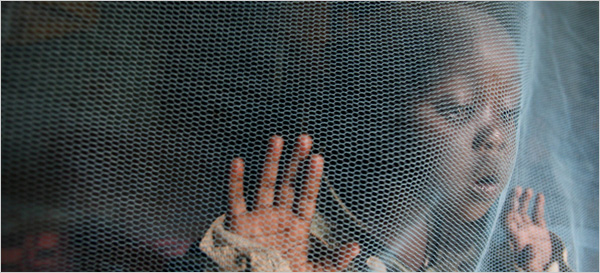{Continuing Kris Zyp’s Gift-Giving Guide from last Friday … enjoy!}
Malaria Prevention: Save Lives, Proven, Short Term
Let’s consider one of the simplest objectives of giving: save lives. Protecting lives is one of the most obvious ways to help others. Rescuing others when we can is clearly Biblical, and certainly there is nothing in life as tragic as losing a loved one.
One group that has done extensive research on various charities, with a focus specifically on how efficient an organization saves live with their funds is Givewell. Givewell has done extremely in-depth reviews of a number of organizations and activities. While they are continuously researching and revising, they have consistently recommended malaria prevention through bed nets, specifically the Against Malaria foundation.
Nearly 750,000 children around the world under the age of 5 die from malaria each year. Bed nets cost about five dollars a piece. It is estimated that one life is saved for roughly every 400-600 bed nets. This means $2500 donation is basically equivalent to literally saving some one’s life. This is quite simply a remarkable impact (who wouldn’t give this to save a friend or loved one’s life?)
Recommendation:
World Vision partners with Against Malaria, so if you want to contribute to a Christian organization to save lives, you can give directly to World Vision’s bed nets fund here.
Education: Improve Lives, Proven, Long Term
For the long term poverty reduction, education is key to a productive and thriving next generation. While health services save many lives, education is necessary for the next generation to be able to sustain health services without relying on western aid. The downstream impacts of education are numerous. Children grow to take higher paying jobs, girls are able to become mothers who can focus and do more for their children, and they are able to become greater contributors to society. This economic increases and health knowledge ultimately also lead to lives being saved.
One of the great injustices of today is sex slavery and other oppression of females. Many fighting these battles have turned to education as the best tool to protect women from a life of prostitution or ills that beset those trapped in the economic bondage of poverty.
Recommendation:
There is more to education that simply getting children in classes. In fact we are increasingly in situations where most kids have access to education, but that education is sub-par. One organization I have read some great reviews on is Pratham, which has been doing some very innovate work with remedial, community-based education: http://www.pratham.org/
Alternately, you may want to consider a health-based approach to improving education. Deworming not only has immediate health benefits, but is considered to be a critical part of school attendance (many children miss school due to health). This is also a recommended initiative by Givewell and Innovations in Poverty Action (http://www.poverty-action.
Or you can go with a Christian organization, WorldVision has an assortment of health services that have high levels of matching/multiplication, and include deworming, here.
Clean Water: Save and Improve Lives, Proven, Medium Term
Water-borne diseases are known to be one of the greatest plagues of poverty. More than 1 million children under 5 die each year from diarrheal disease. Consequently, there has been a lot of focus on safe water initiatives, generally focused on building wells. However, the cost effectiveness of building wells, in terms of saving lives, doesn’t seem to be as good as buying bed nets to protect against Malaria. But, there is an approach to ensuring safe water that does seem to show similar high levels cost efficiency: communal chlorine dispensers. These chlorine dispenser, strategically positioned at water sources, appear to have a similar life saving rate as bed nets. And of course, ensuring safe water has benefits far beyond just saving lives. Safe water provides better nutrition, resistance to infection, growth, and improved performance at school.
Innovations in Poverty Action is leading this innovative approach to safe water. You can donate or learn more here.
Contraceptives: Reduce Deaths, Proven, Long Term (and controversial)
If one’s goal is defined specifically as reducing deaths, I would be remiss to not include the intervention that has shown by far the highest rate of death reduction per dollar spent: improving availability of contraceptives. I am certainly not unaware of the controversial nature of such a recommendation. Many have strong objections to supporting organization working on population control. And we can’t rightly say that these efforts are primarily “saving lives” in general, since the principle means by which most deaths are reduced is by avoiding the birth of those bound to die in the first place. But, the well established and spectacular efficacy of birth control access in reducing abortion rates, childhood deaths, and even maternal deaths (which does fit the more narrow category of “saving lives”) means that a dollar spent on access to birth control in developing countries, reduces death more effectively than any other aid effort, on the range of $7 to $177 per death averted. Nothing else comes close.
The most broad and concerted efforts in the area of access to birth control for developing countries have been undertaken by the United Nations Population Fund (UNFPA). You can donate to them here.
{Lots to consider, yes? Thank you for thoughtfully weighing these different giving options and committing time to pray, asking God where He would have you devote His resources. More to come; Have a great weekend and thanks for reading.}


